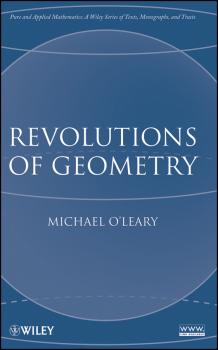Michael O'Leary L.
Список книг автора Michael O'Leary L.A First Course in Mathematical Logic and Set Theory
A mathematical introduction to the theory and applications of logic and set theory with an emphasis on writing proofs Highlighting the applications and notations of basic mathematical concepts within the framework of logic and set theory, A First Course in Mathematical Logic and Set Theory introduces how logic is used to prepare and structure proofs and solve more complex problems. The book begins with propositional logic, including two-column proofs and truth table applications, followed by first-order logic, which provides the structure for writing mathematical proofs. Set theory is then introduced and serves as the basis for defining relations, functions, numbers, mathematical induction, ordinals, and cardinals. The book concludes with a primer on basic model theory with applications to abstract algebra. A First Course in Mathematical Logic and Set Theory also includes: Section exercises designed to show the interactions between topics and reinforce the presented ideas and concepts Numerous examples that illustrate theorems and employ basic concepts such as Euclid’s lemma, the Fibonacci sequence, and unique factorization Coverage of important theorems including the well-ordering theorem, completeness theorem, compactness theorem, as well as the theorems of Löwenheim–Skolem, Burali-Forti, Hartogs, Cantor–Schröder–Bernstein, and König An excellent textbook for students studying the foundations of mathematics and mathematical proofs, A First Course in Mathematical Logic and Set Theory is also appropriate for readers preparing for careers in mathematics education or computer science. In addition, the book is ideal for introductory courses on mathematical logic and/or set theory and appropriate for upper-undergraduate transition courses with rigorous mathematical reasoning involving algebra, number theory, or analysis.
Revolutions of Geometry
Guides readers through the development of geometry and basic proof writing using a historical approach to the topic In an effort to fully appreciate the logic and structure of geometric proofs, Revolutions of Geometry places proofs into the context of geometry's history, helping readers to understand that proof writing is crucial to the job of a mathematician. Written for students and educators of mathematics alike, the book guides readers through the rich history and influential works, from ancient times to the present, behind the development of geometry. As a result, readers are successfully equipped with the necessary logic to develop a full understanding of geometric theorems. Following a presentation of the geometry of ancient Egypt, Babylon, and China, the author addresses mathematical philosophy and logic within the context of works by Thales, Plato, and Aristotle. Next, the mathematics of the classical Greeks is discussed, incorporating the teachings of Pythagoras and his followers along with an overview of lower-level geometry using Euclid's Elements. Subsequent chapters explore the work of Archimedes, Viete's revolutionary contributions to algebra, Descartes' merging of algebra and geometry to solve the Pappus problem, and Desargues' development of projective geometry. The author also supplies an excursion into non-Euclidean geometry, including the three hypotheses of Saccheri and Lambert and the near simultaneous discoveries of Lobachevski and Bolyai. Finally, modern geometry is addressed within the study of manifolds and elliptic geometry inspired by Riemann's work, Poncelet's return to projective geometry, and Klein's use of group theory to characterize different geometries. The book promotes the belief that in order to learn how to write proofs, one needs to read finished proofs, studying both their logic and grammar. Each chapter features a concise introduction to the presented topic, and chapter sections conclude with exercises that are designed to reinforce the material and provide readers with ample practice in writing proofs. In addition, the overall presentation of topics in the book is in chronological order, helping readers appreciate the relevance of geometry within the historical development of mathematics. Well organized and clearly written, Revolutions of Geometry is a valuable book for courses on modern geometry and the history of mathematics at the upper-undergraduate level. It is also a valuable reference for educators in the field of mathematics.

